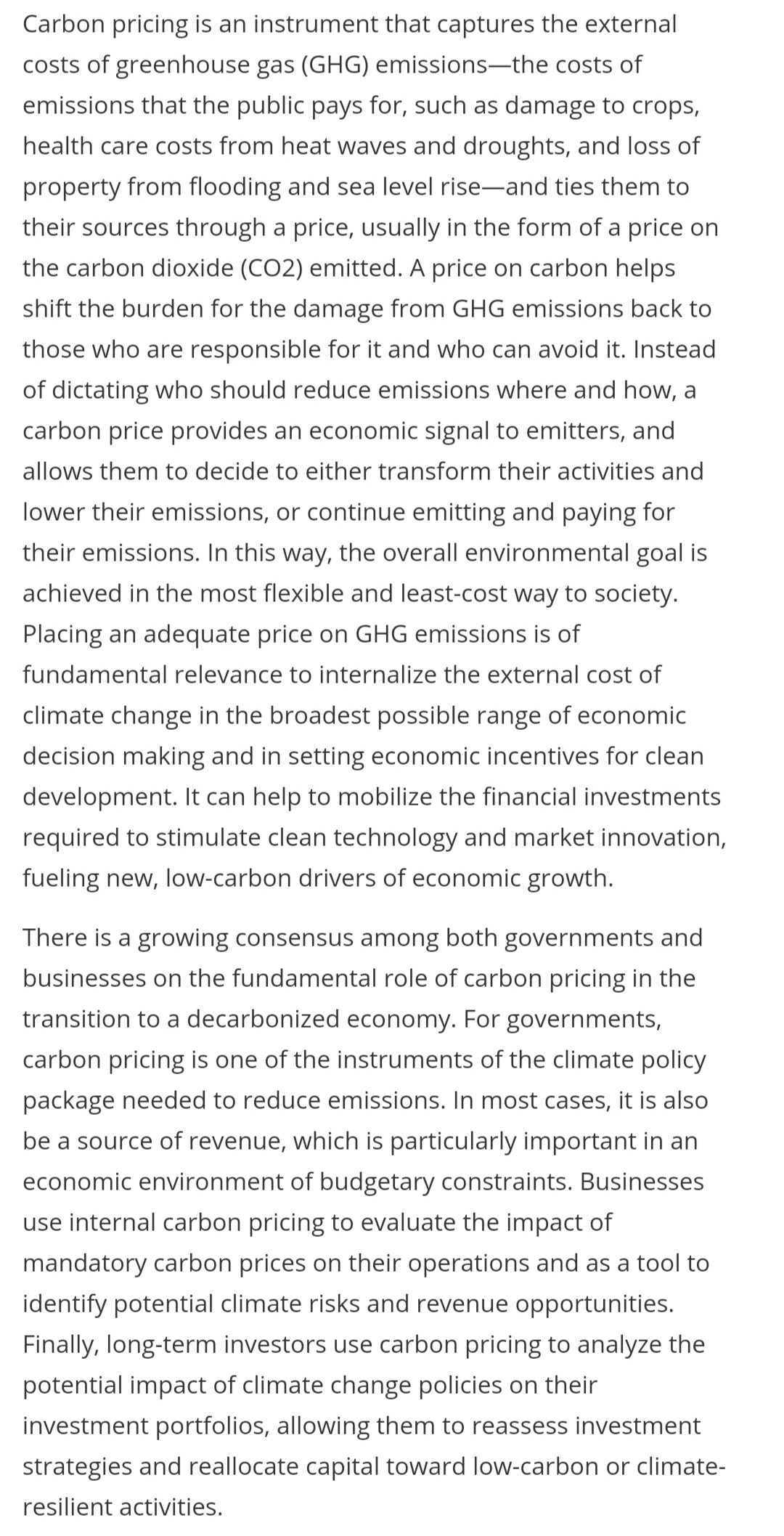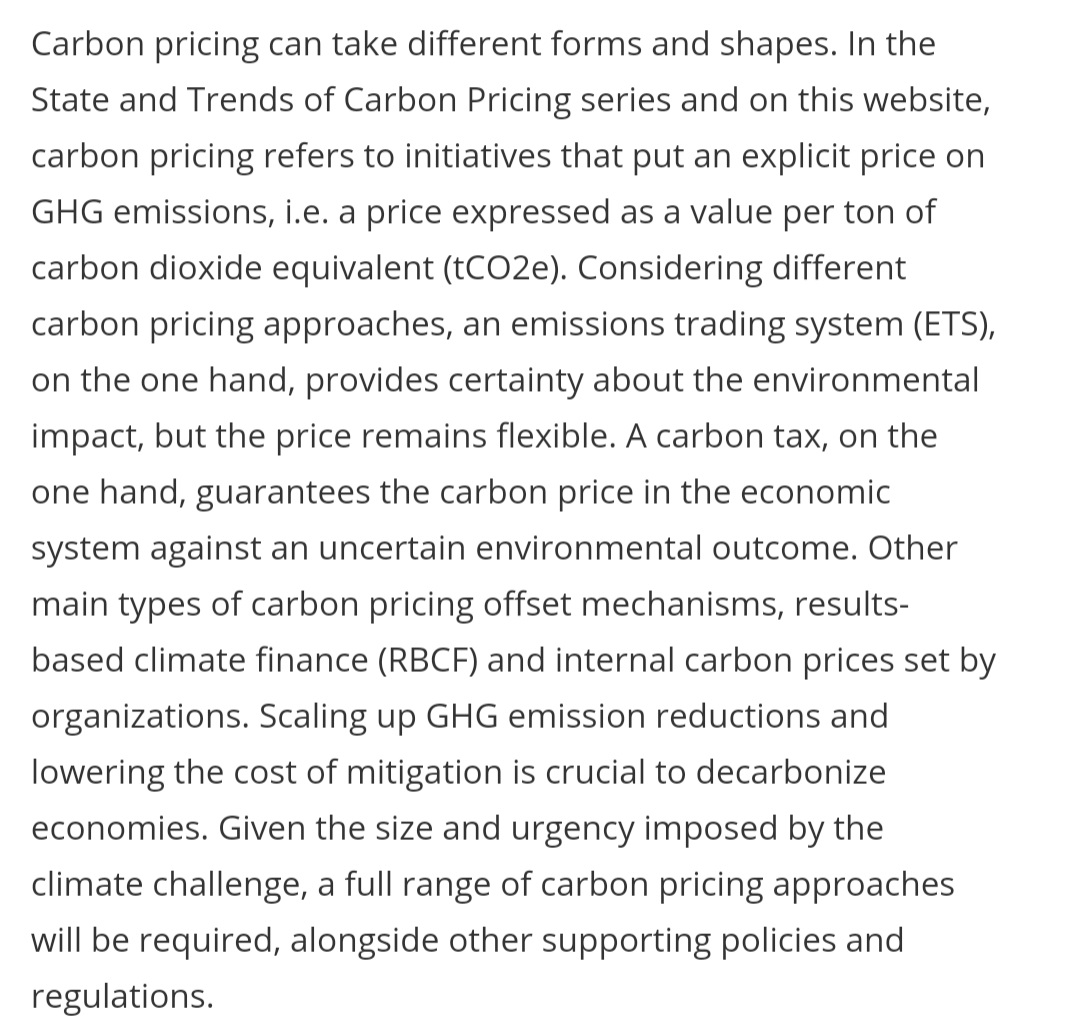What externality is carbon pricing trying to address? Explain why this is an externality. What roll does government have in addressing externalities
What externality is carbon pricing trying to address? Explain why this is an externality. What roll does government have in addressing externalities
Essentials of Economics (MindTap Course List)
8th Edition
ISBN:9781337091992
Author:N. Gregory Mankiw
Publisher:N. Gregory Mankiw
Chapter10: Externalities
Section: Chapter Questions
Problem 2PA
Related questions
Question
What externality is carbon pricing trying to address? Explain why this is an externality. What roll does government have in addressing externalities

Transcribed Image Text:Carbon pricing is an instrument that captures the external
costs of greenhouse gas (GHG) emissions-the costs of
emissions that the public pays for, such as damage to crops,
health care costs from heat waves and droughts, and loss of
property from flooding and sea level rise-and ties them to
their sources through a price, usually in the form of a price on
the carbon dioxide (CO2) emitted. A price on carbon helps
shift the burden for the damage from GHG emissions back to
those who are responsible for it and who can avoid it. Instead
of dictating who should reduce emissions where and how, a
carbon price provides an economic signal to emitters, and
allows them to decide to either transform their activities and
lower their emissions, or continue emitting and paying for
their emissions. In this way, the overall environmental goal is
achieved in the most flexible and least-cost way to society.
Placing an adequate price on GHG emissions is of
fundamental relevance to internalize the external cost of
climate change in the broadest possible range of economic
decision making and in setting economic incentives for clean
development. It can help to mobilize the financial investments
required to stimulate clean technology and market innovation,
fueling new, low-carbon drivers of economic growth.
There is a growing consensus among both governments and
businesses on the fundamental role of carbon pricing in the
transition to a decarbonized economy. For governments,
carbon pricing is one of the instruments of the climate policy
package needed to reduce emissions. In most cases, it is also
be a source of revenue, which is particularly important in an
economic environment of budgetary constraints. Businesses
use internal carbon pricing to evaluate the impact of
mandatory carbon prices on their operations and as a tool to
identify potential climate risks and revenue opportunities.
Finally, long-term investors use carbon pricing to analyze the
potential impact of climate change policies on their
investment portfolios, allowing them to reassess investment
strategies and reallocate capital toward low-carbon or climate-
resilient activities.

Transcribed Image Text:Carbon pricing can take different forms and shapes. In the
State and Trends of Carbon Pricing series and on this website,
carbon pricing refers to initiatives that put an explicit price on
GHG emissions, i.e. a price expressed as a value per ton of
carbon dioxide equivalent (tCO2e). Considering different
carbon pricing approaches, an emissions trading system (ETS),
on the one hand, provides certainty about the environmental
impact, but the price remains flexible. A carbon tax, on the
one hand, guarantees the carbon price in the economic
system against an uncertain environmental outcome. Other
main types of carbon pricing offset mechanisms, results-
based climate finance (RBCF) and internal carbon prices set by
organizations. Scaling up GHG emission reductions and
lowering the cost of mitigation is crucial to decarbonize
economies. Given the size and urgency imposed by the
climate challenge, a full range of carbon pricing approaches
will be required, alongside other supporting policies and
regulations.
Expert Solution
This question has been solved!
Explore an expertly crafted, step-by-step solution for a thorough understanding of key concepts.
Step by step
Solved in 2 steps

Knowledge Booster
Learn more about
Need a deep-dive on the concept behind this application? Look no further. Learn more about this topic, economics and related others by exploring similar questions and additional content below.Recommended textbooks for you

Essentials of Economics (MindTap Course List)
Economics
ISBN:
9781337091992
Author:
N. Gregory Mankiw
Publisher:
Cengage Learning



Essentials of Economics (MindTap Course List)
Economics
ISBN:
9781337091992
Author:
N. Gregory Mankiw
Publisher:
Cengage Learning



Principles of Economics 2e
Economics
ISBN:
9781947172364
Author:
Steven A. Greenlaw; David Shapiro
Publisher:
OpenStax

Microeconomics: Principles & Policy
Economics
ISBN:
9781337794992
Author:
William J. Baumol, Alan S. Blinder, John L. Solow
Publisher:
Cengage Learning
